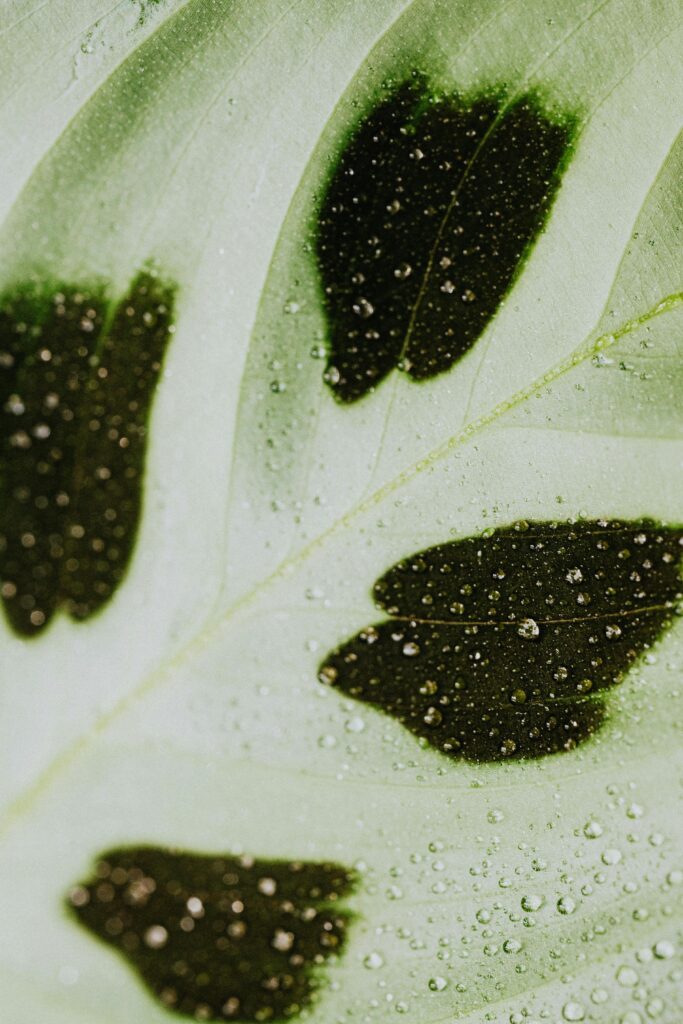
1. Botanical Overview:

- Family and Species:
- Maranta belongs to the Marantaceae family, which also includes other ornamental plants like Calathea and Ctenanthe.
- The genus includes several species, with Maranta leuconeura (the most common species) and its various cultivars being the most popular.
- Plant Characteristics:
- Low-growing perennial with vibrant, patterned leaves.
- Leaves are usually oval or lance-shaped with striking patterns, such as dark green veins or reddish markings.
- Growth habit: Spreading, ground-hugging plant that can be grown in pots or baskets.
- Maranta plants are also famous for their unique leaf movement (nyctinasty), where leaves fold up at night and open during the day.
2. Ideal Growing Conditions:
- Light:
- Prefers bright, indirect light but can tolerate low light conditions.
- Direct sunlight can scorch the leaves, so avoid placing the plant in harsh sunlight, especially during midday.
- Ideal for placement near east or north-facing windows.
- Temperature:
- Prefers warm temperatures between 65°F–75°F (18°C–24°C).
- Sensitive to cold drafts, so keep away from air conditioners, radiators, and open windows during colder months.
- Humidity:
- Maranta thrives in high humidity (50% or more), typical of its native tropical environment.
- Regular misting, placing the plant on a humidity tray, or using a humidifier can help increase humidity.
- If the air is too dry, the plant may show signs of stress, such as curling or browning leaf edges.
- Soil:
- Prefers well-draining, rich, and slightly acidic soil (pH 5.5-6.5).
- A standard potting mix mixed with perlite, orchid bark, or sand works well to ensure good drainage and aeration.
- Avoid heavy, clay-based soils that can trap water and lead to root rot.
3. Watering Maranta:
- Watering Basics:
- Water when the top 1-2 inches of soil are dry, typically once a week or every 7-10 days.
- Use room-temperature water, and make sure it’s free of chlorine or fluoride (distilled or rainwater is preferred).
- Water thoroughly, ensuring the excess drains from the pot.
- Signs of Overwatering:
- Yellowing leaves, mushy or soft spots on the leaves or stems, and an unpleasant odor from the soil.
- Root rot is a common issue from overwatering, so ensure proper drainage in the pot.
- Signs of Underwatering:
- Dry, crispy edges or tips on the leaves.
- Wilting or drooping leaves, which may also curl up and become brown.
- Watering Tips:
- Always check the soil moisture before watering to avoid overwatering or underwatering.
- If the humidity is very low, increase watering frequency or consider setting up a humidity tray.
4. Fertilizing Maranta:
- When to Fertilize:
- Fertilize every 4-6 weeks during the growing season (spring through early fall).
- Reduce or stop fertilizing during the dormant season (fall and winter) when the plant’s growth slows.
- Type of Fertilizer:
- Use a balanced liquid fertilizer (e.g., 10-10-10) diluted to about half strength.
- Alternatively, use a fertilizer formulated for houseplants or tropical plants.
- How to Fertilize:
- Apply fertilizer to the soil after watering, ensuring it’s evenly distributed and not concentrated in one area.
- Avoid applying fertilizer directly to dry soil, as this can burn the roots.
- Signs of Over-Fertilizing:
- Yellowing or browning leaf tips, excessive leggy growth, or salt buildup on the surface of the soil.
- Signs of Under-Fertilizing:
- Slow or stunted growth, pale leaves, or lack of vibrant coloring in the leaves.
5. Common Issues and How to Solve Them:
- Curling or Brown Leaf Edges:
- Causes: Low humidity, underwatering, or over-fertilizing.
- Solutions: Increase humidity, check watering practices, and avoid using too much fertilizer.
- Yellowing Leaves:
- Causes: Overwatering, poor drainage, or root rot.
- Solutions: Adjust watering schedule, ensure the plant is in well-draining soil, and check for signs of root rot.
- Leggy Growth:
- Causes: Insufficient light or overcrowding.
- Solutions: Provide brighter indirect light, remove dead stems, and prune to encourage fuller growth.
- Pests:
- Common pests: Spider mites, aphids, and mealybugs.
- Solutions: Regularly inspect for pests, wipe the leaves with a damp cloth, and treat infestations with insecticidal soap or neem oil.
6. Pruning and Maintenance:
- Why Prune Maranta?
- Pruning helps to keep the plant looking tidy by removing dead or damaged leaves.
- Encourages denser, bushier growth and prevents the plant from becoming leggy.
- When to Prune:
- Prune during the growing season (spring and summer) when the plant is actively growing.
- Remove any yellow, brown, or dead leaves to promote better airflow and aesthetics.
- How to Prune:
- Use clean, sharp scissors or pruning shears to cut off any unwanted stems or leaves.
- Avoid cutting too many healthy leaves at once; focus on dead or unhealthy growth.
- Maintaining Shape:
- Regularly pinch back the tips of long stems to encourage branching and maintain a full, compact shape.
7. Repotting Maranta:
- When to Repot:
- Repot every 1-2 years or when the plant becomes root-bound (roots growing out of the drainage holes).
- Signs it’s time to repot include slow growth, roots poking out of the bottom of the pot, or the soil drying out too quickly.
- Best Potting Tips:
- Choose a slightly larger pot (1-2 inches larger in diameter) to allow for future growth.
- Ensure the new pot has drainage holes to prevent waterlogging and root rot.
- Repotting Steps:
- Gently remove the plant from its current pot and shake off excess soil.
- Trim any damaged or excessively long roots.
- Place the plant in fresh, well-draining potting mix and water it lightly after repotting.
8. Propagation of Maranta:
- How to Propagate:
- Maranta can be propagated through stem cuttings or division.
- Stem Cuttings: Cut a healthy stem with at least one leaf node and place it in water or moist soil until roots develop.
- Division: If your plant has multiple stems, you can divide the plant into smaller sections during repotting, ensuring each section has roots attached.
- Propagation Tips:
- Take cuttings in the spring or early summer for best success.
- Ensure the cutting is kept warm, in indirect light, and with consistent humidity to promote rooting.
- Speed of Propagation:
- Stem cuttings generally root within 2-4 weeks, while division may take a bit longer for the plant to settle and begin growing.
9. Benefits of Owning Maranta:
- Aesthetic Appeal:
- The unique leaf movement and bold, colorful foliage make Maranta a striking addition to any indoor space.
- Low Maintenance:
- With the right care (light, humidity, and watering), Maranta is a relatively easy-to-care-for plant that can thrive indoors.
- Air Purification:
- Like many houseplants, Maranta helps purify indoor air by absorbing carbon dioxide and releasing oxygen.
- Pet-Safe:
- Maranta is non-toxic to cats and dogs, making it a safe option for homes with pets.
10. Fun Facts About Maranta:
- Name Origin: The genus Maranta is named after an Italian physician and botanist, Bartolomeo Maranta, who is credited with discovering the plant.
- Unique Leaf Movement: The plant is known for its “prayer” behavior, where its leaves fold upward at night and open during the day in response to light.
- Cultural Significance: In its native regions, Maranta is sometimes used in folk medicine, although it is mainly grown for ornamental purposes.
Featured image credit: Kurt Stüber [1], CC BY-SA 3.0 http://creativecommons.org/licenses/by-sa/3.0/, via Wikimedia Commons

